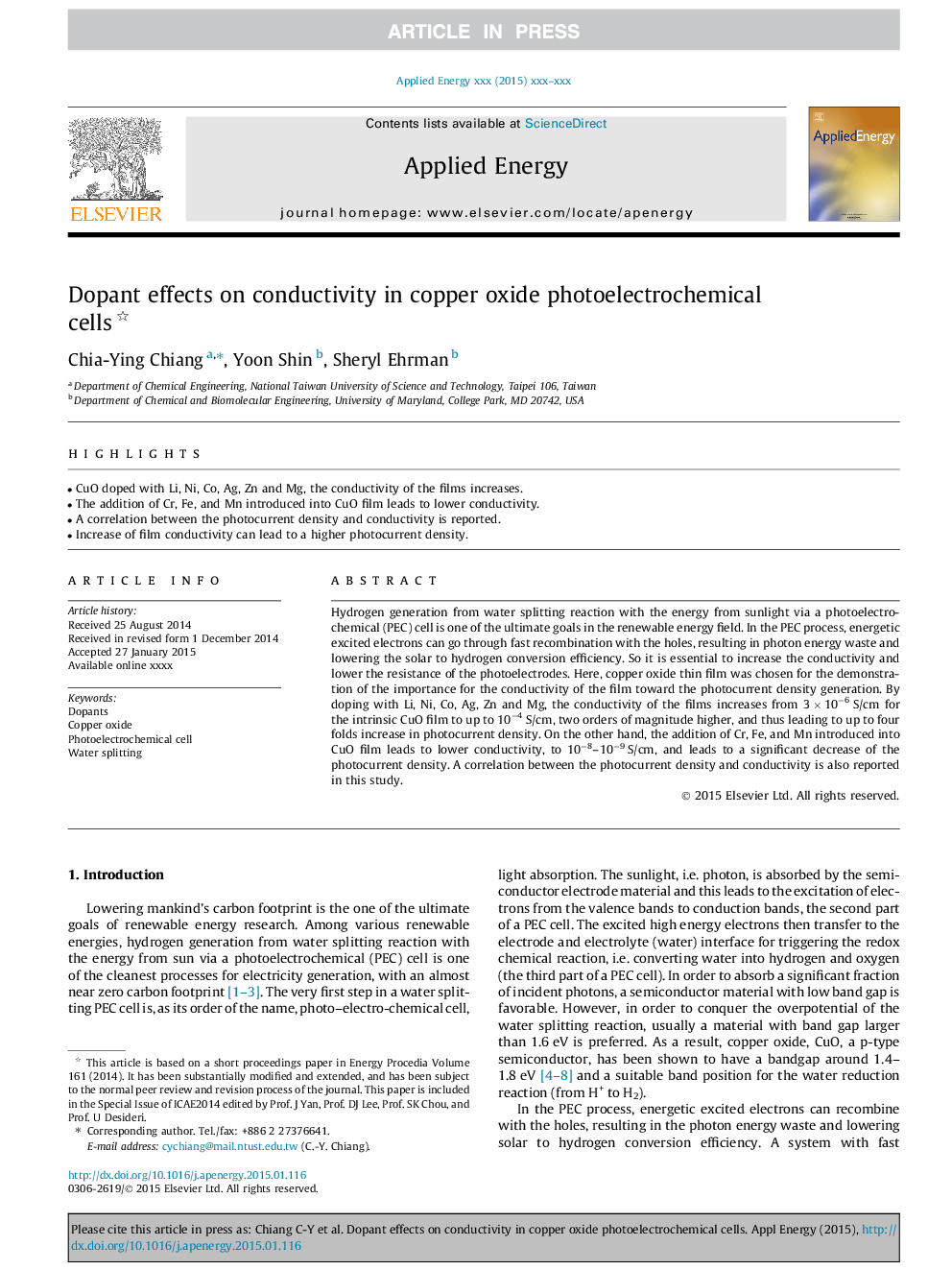| Article ID | Journal | Published Year | Pages | File Type |
|---|---|---|---|---|
| 6684438 | Applied Energy | 2016 | 4 Pages |
Abstract
Hydrogen generation from water splitting reaction with the energy from sunlight via a photoelectrochemical (PEC) cell is one of the ultimate goals in the renewable energy field. In the PEC process, energetic excited electrons can go through fast recombination with the holes, resulting in photon energy waste and lowering the solar to hydrogen conversion efficiency. So it is essential to increase the conductivity and lower the resistance of the photoelectrodes. Here, copper oxide thin film was chosen for the demonstration of the importance for the conductivity of the film toward the photocurrent density generation. By doping with Li, Ni, Co, Ag, Zn and Mg, the conductivity of the films increases from 3Â ÃÂ 10â6Â S/cm for the intrinsic CuO film to up to 10â4Â S/cm, two orders of magnitude higher, and thus leading to up to four folds increase in photocurrent density. On the other hand, the addition of Cr, Fe, and Mn introduced into CuO film leads to lower conductivity, to 10â8-10â9Â S/cm, and leads to a significant decrease of the photocurrent density. A correlation between the photocurrent density and conductivity is also reported in this study.
Related Topics
Physical Sciences and Engineering
Energy
Energy Engineering and Power Technology
Authors
Chia-Ying Chiang, Yoon Shin, Sheryl Ehrman,
